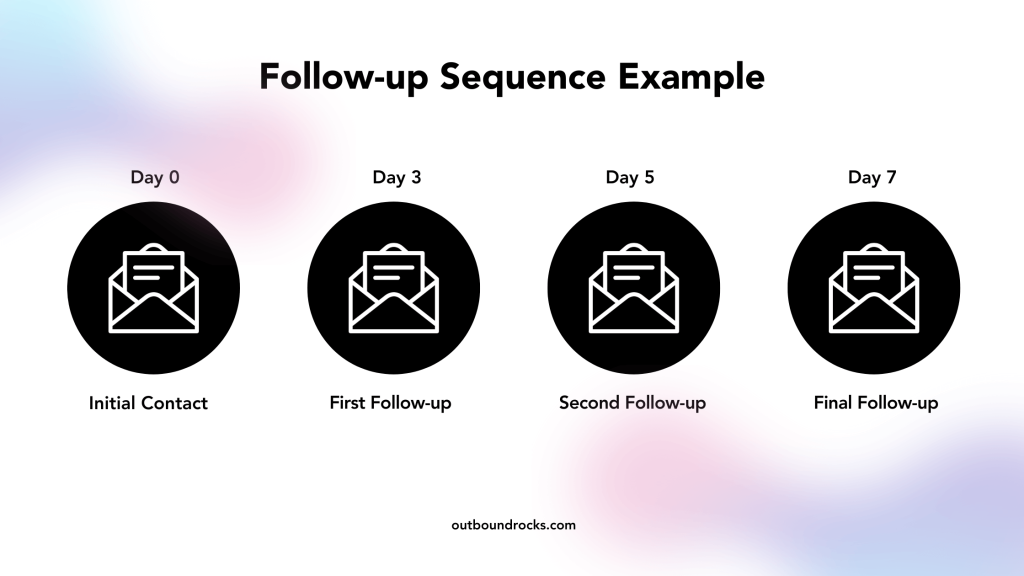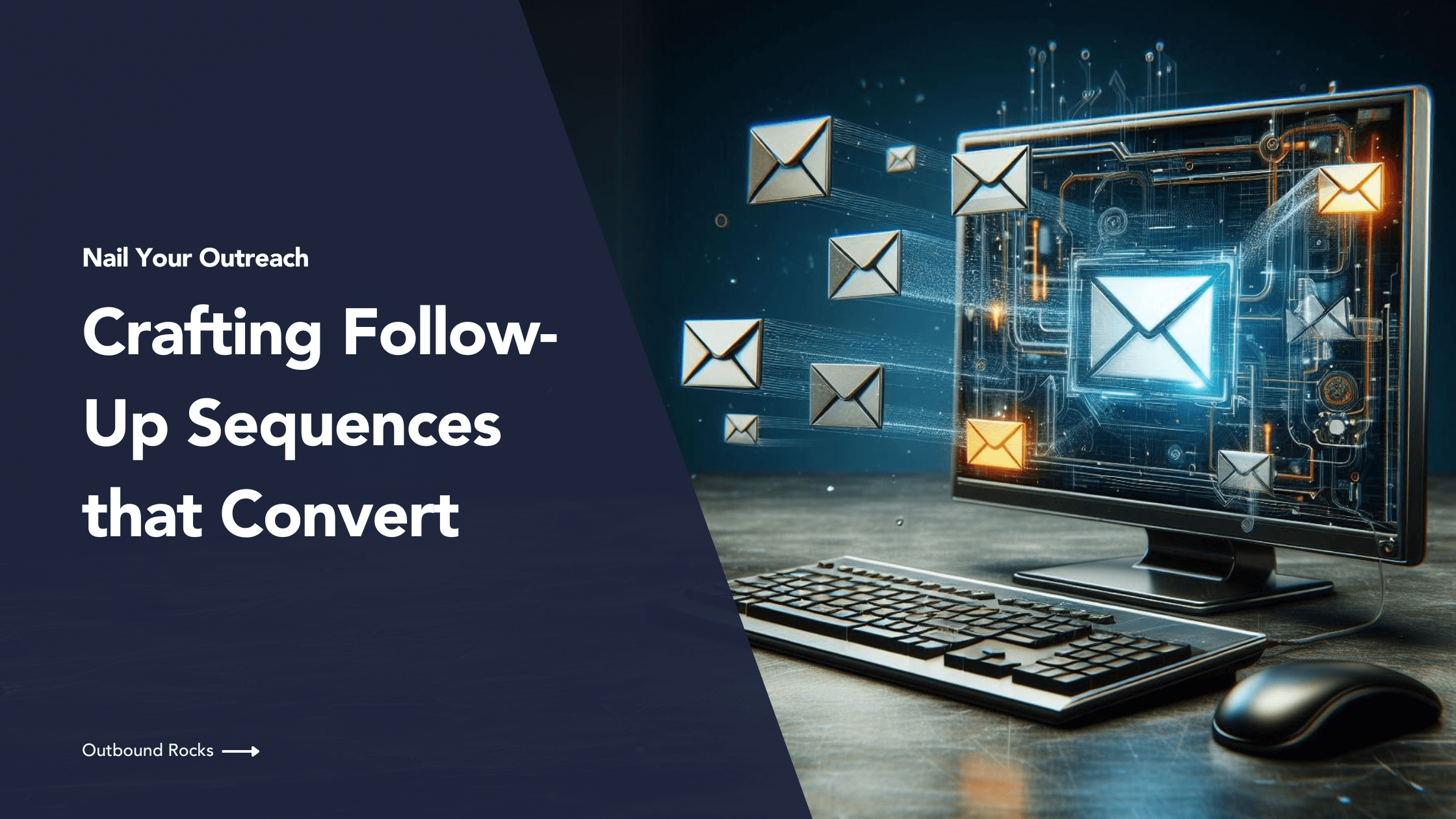It takes a carefully crafted series of messages to capture attention, keep your offer relevant, and ultimately convert leads into loyal customers. They are called “follow-up sequences.”
In this article, we’ll show you how to create sequences that not only grab attention, but nurture and convert leads.
Let’s see how to increase your email outreach and grow your business!
TABLE OF CONTENTS
– What are the follow-up sequences?
– How to write the best follow-up sequences
– 1) First follow-up sequence
– 2) Second follow-up sequence
– 3) Final follow-up sequence
– Conclusions
What are the follow-up sequences?
A follow-up email sequence is a series of strategically planned messages sent to someone after an initial touchpoint, such as an email, phone call, or even attendance at an event.
These messages are designed to nurture and strengthen the connection, ultimately leading the recipient to a desired outcome, such as making a purchase, signing up for a service, or attending a meeting.
How to write the best follow-up sequences
Before we dive into the perfect follow-up sequences, it is important to talk about the importance of good email structure.
You can follow this powerful formula to write a focused, direct, and winning email:
✅ Personalize: greet your lead by name, mention their company or relevant details, and show that you’ve actually done your research. This creates a connection and makes them feel valued.
✅ Pain point: identify a challenge they’re likely facing. Then present your product or service as a solution, highlighting how it directly addresses their pain point.
✅ CTA (call to action): tell them exactly what you want them to do next. Whether it’s to visit your website, schedule a call, or download a resource, make it clear and easy for them to take the next step.
✅ Address objections: anticipate any concerns or objections they may have about your offer. Briefly address these concerns in your email to provide reassurance and build trust.
This is a follow-up email sequence. We will give an example and develop this point later in this article.

First follow-up sequence
The first follow-up email is about keeping your message top of mind without being intrusive or repetitive. It’s like a gentle reminder, not a blaring alarm clock.
Here are a few things to keep in mind:
- Wait at least 3-4 days after your initial email before sending the first follow-up.
- Consider their time zone. If you’re emailing someone in a different time zone, adjust your send time accordingly.
- Offer something helpful, not just another sales pitch.
- Send 2-3 follow-up emails before abandoning the lead.
Consider using a follow-up sequence tool such as Outbound Rocks to automate the process while maintaining personalization
Second follow-up sequence
While the first follow-up was a friendly nudge, the second takes a slightly different approach. It’s time to rethink your angle and explore alternative ways to get their attention.
Here’s what to consider:
- Re-evaluate whether your initial offer resonated. If you haven’t heard back, maybe your pitch didn’t quite hit their pain point.
- Refocus your solution. Present your product or service from a different perspective, highlighting aspects that may be more relevant to their situation this time.
- Offer a different type of value. It could be a free consultation, a webinar, or an exclusive white paper. Provide something that will entice them to engage without feeling pressured.
- Ask a question to re-engage them. Open the door to a conversation by asking something specific about their challenges or industry.
- Wait at least 5-7 days after your first follow-up before sending the second.
- Consider the day of the week. Weekdays tend to be busier, so try sending on a Tuesday or Wednesday for better engagement.
Remember, the second follow-up is about understanding, adapting, and continuing to provide value. By offering fresh perspectives and showing flexibility, you can increase your chances of sparking their interest and turning them into potential customers.
Final follow-up sequence
Your final follow-up is not a last-ditch effort to force a sale. It’s an opportunity to show grace, nurture relationships, and leave a positive impression, even if they’re not ready to commit.
Here’s how to make it count:
- Wait at least 10-14 days after your second follow-up before sending the final one. Give them time to consider your previous messages.
- Offer alternative ways to contact them. Don’t disappear if they don’t respond to your email. Give them other ways to reach you, such as social media or a contact form on your website.
- Express gratitude and goodwill. Thank them for their time and wish them well, even if they don’t convert right away.
- Leave the door open for future connection. Invite them to contact you if their needs change or their situation evolves.
Remember, your final follow-up is an opportunity to build loyalty and trust, even if they’re not ready to convert.
A follow-up email sequence example
Here’s a short example of a follow-up email sequence for a SaaS company trying to convert leads into free trial users:
Initial Contact
? Subject: [Lead’s name], Ready to [solve a specific pain point]?
? Content: Introduce the product’s key features and benefits, addressing the lead’s pain point. Offer a free trial and a clear call to action to sign up.
First Follow-up (3 days later)
? Subject: Questions about [product name]? I’m here to help.
? Content: Acknowledge lack of response, offer to answer any questions, and reiterate key benefits. Include a testimonial or case study to build credibility.
Second Follow-up (5 days later)
? Subject: Don’t miss out on [specific feature]!
? Content: Highlight a specific feature or benefit that aligns with the lead’s interests. Offer a limited-time incentive to encourage trial sign-up.
Final Follow-up (7 days later)
? Subject: Still interested in [solving pain point]?
? Content: Offer alternative solutions or resources if they’re not ready for the product. Ask for feedback to understand their hesitations and maintain the relationship.
Remember: This is a simplified example. Sequences can vary in length, frequency, and content based on your industry, target audience, and goals.
Conclusions
Remember, great sales and marketing isn’t about pushing, it’s about making real connections and nurturing leads with empathy and understanding.
If you need a follow-up sequence tool to automate the process while maintaining personalization, fill out the form below to try Outbound Rocks for free.
